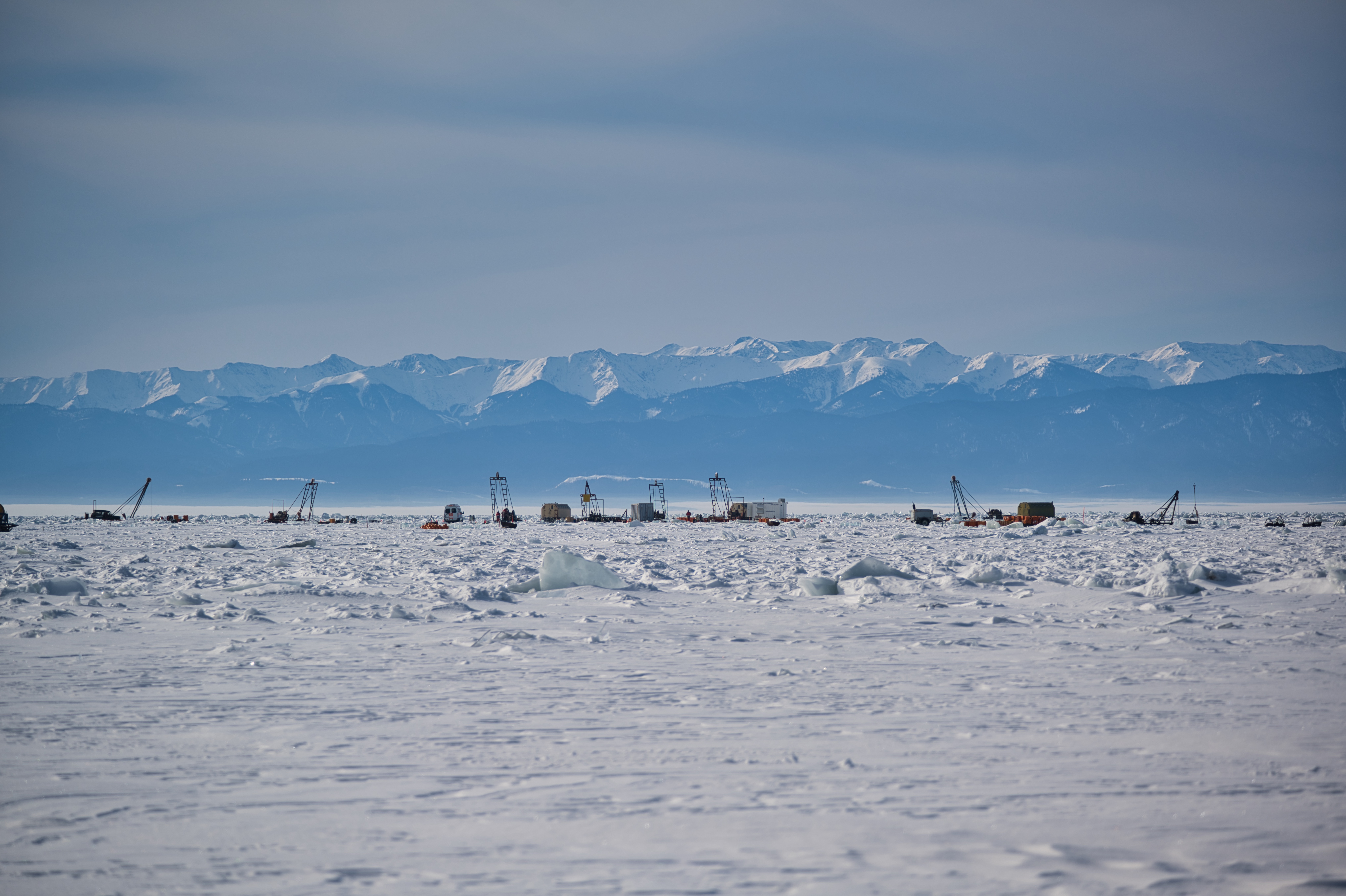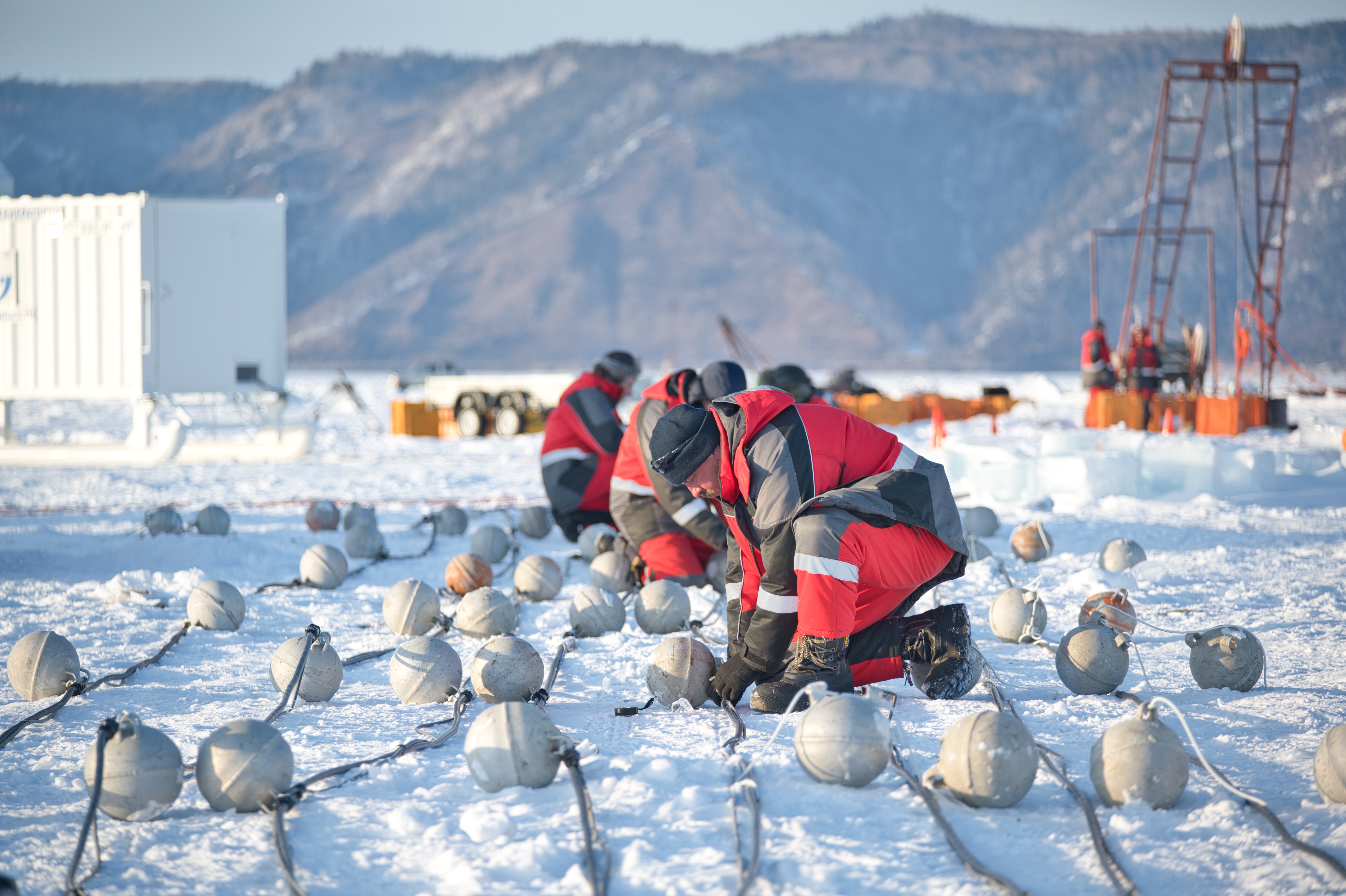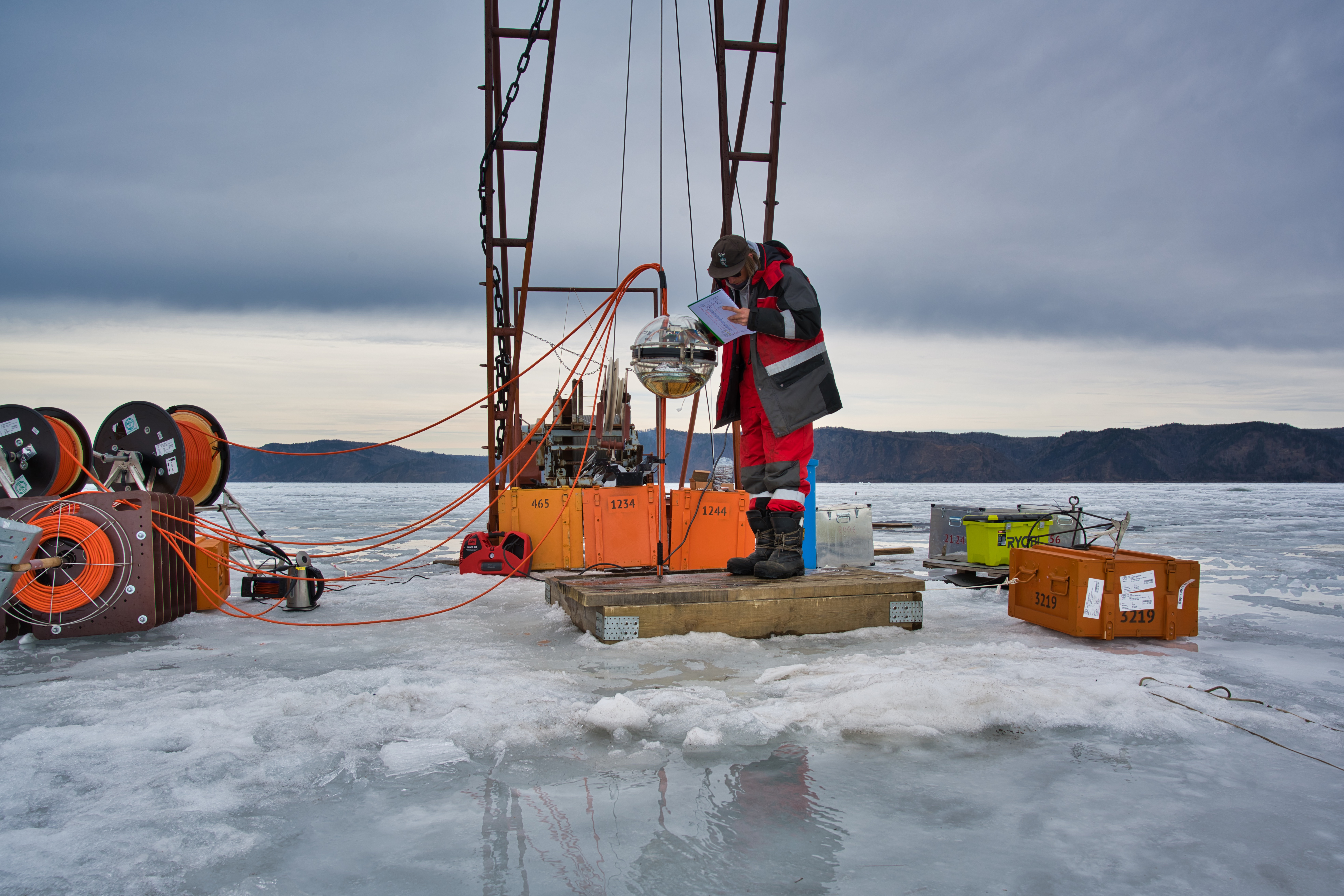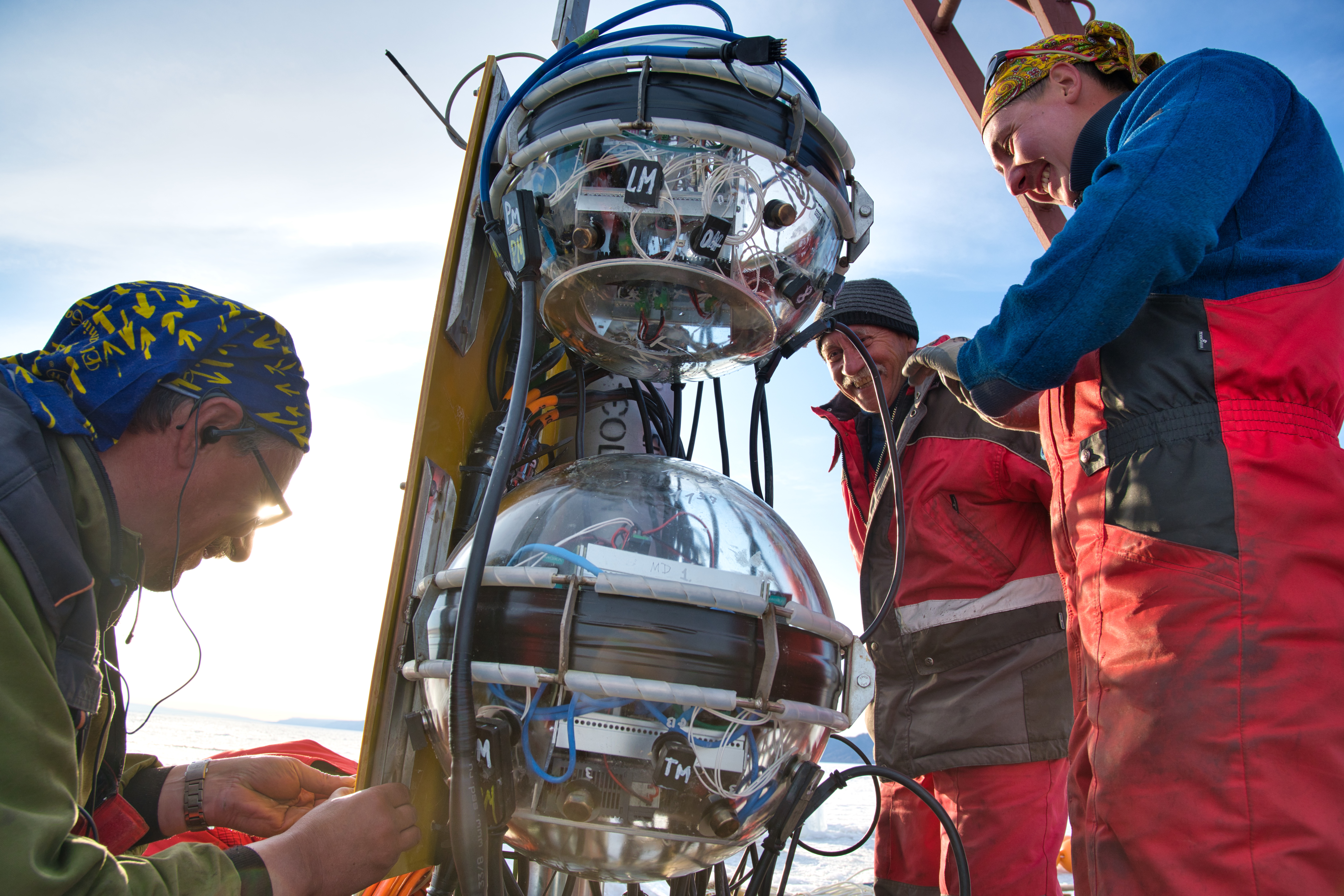Baikal-GVD launched. What’s happening now?
News, 19 May 2021
After the official launch of the project in March 2021, the neutrino telescope Baikal-GVD is now operating in its normal mode. The data obtained at the telescope is transmitted to the JINR computing facilities and undergoes preliminary processing.
Moreover, the facility will continue to increase its volume. Now it has a volume of 0.4 km3. In 2027, the efficient volume of the telescope for the registration of shower neutrino interactions is expected to reach one cubic kilometre. The Baikal neutrino telescope under construction is a unique scientific facility and, along with the IceCube, ANTARES, and KM3NET telescopes, is included in the Global Neutrino Network (GNN) being its largest element in the Northern hemisphere of the Earth.
Press release on the completion of the expedition 2021
A few facts about Baikal-GVD
What is Baikal-GVD looking for?
The Baikal-GVD neutrino telescope aims to register and study high-energy neutrino flows produced by astrophysical sources. One of its key tasks is to register high-energy neutrinos. Scientists are going to study the processes occurring with enormous energy release that took place in the Universe in the distant past using this neutrino detector. One of the secrets of modern astrophysics is the production mechanism of astrophysical neutrinos in the Universe that are billions of times more energetic than solar neutrinos. And the Baikal neutrino telescope will be able to shed light on this mystery thanks to its unique characteristics.
Why is the facility located on Lake Baikal?
The Baikal neutrino telescope is located on lake Baikal 3,6 km far from the shore where the depth of the lake reaches 1,366 m. The location for the facility was not chosen by chance. First of all, there are a railway and power lines. A large industrial and scientific city Irkutsk is 55 km away. Secondly, the water of the lake is fresh, which prevents possible damage to the equipment. Thirdly, there is solid ice covering the lake for two months a year thus allowing safely conducting installation work. And, finally, there is no background glow from K40 and bioluminescence, which is flashy in nature. They could interfere with the proper operation of the detector.
The largest structural unit of the GVD is a cluster. As for 2021, the detector has 8 clusters placed at a distance of 300 m from each other. Each of them consists of 8 vertically suspended strings at which glass optical modules – 36 on each of them – are hanged. The designed volume of the finished facility on lake Baikal should be about one cubic kilometre. Nowadays, the effective volume of the facility has reached 0.4 km3. The telescope operates in normal mode. The data obtained at the telescope is transmitted to the JINR computing facilities and undergoes preliminary processing.
Who is part of the experiment collaboration?
The Baikal Neutrino Telescope is being constructed today by the efforts of the international collaboration in which the RAS Institute for Nuclear Research (Moscow), the initiator of the experiment and the founder of the field “neutrino astronomy” in the world, and the Joint Institute for Nuclear Research (Dubna) play a leading role. In total, more than 70 scientists and engineers from ten research centres in Russia, Germany, Poland, the Czech Republic and Slovakia take part in the project.
Some figures:
- Today, the detector has 8 clusters.
- There are 8 strings in one cluster.
- Each string has 36 optical modules.
- Each cluster has 288 optical modules installed.
- The effective volume reached in 2021 is 0.4 km3.
Photos by Bair Shaibonov,
Following information of the Laboratory of Nuclear Problems



